Barcelona's Timeless Treasures Unveiled
Embark on a captivating journey through Barcelona's historic sites, where every step reveals stories of the past. Join us for a memorable exploration of culture and history.
Time
3 Hours
Stops
9 Places
Distance
2.7 km
Arc de Triomf
Begin your tour at the iconic Arc de Triomf, a triumphal arch built for the 1888 Barcelona World Fair, which serves as a grand entrance to the city's historic and cultural heart.
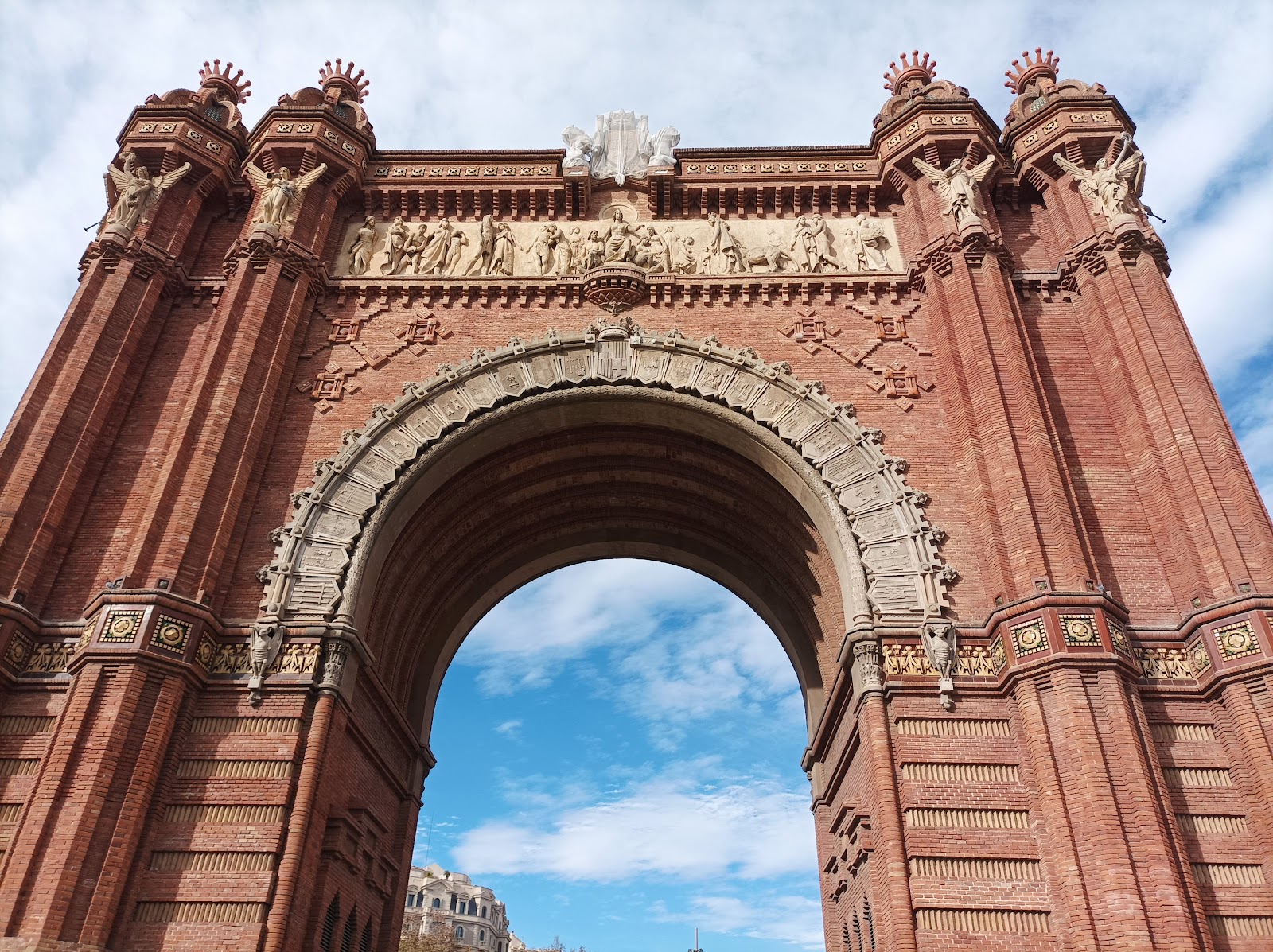
Arc de Triomf (Source: Google Maps)
The Arc de Triomf is an iconic triumphal arch that was constructed as the main access gate for the 1888 Barcelona World Fair. Designed by architect Josep Vilaseca i Casanovas, the arch is made of red brick and features intricate carvings and sculptures that symbolize the city’s cultural heritage. The arch stands 30 meters tall and is adorned with decorative motifs representing agriculture, industry, and commerce, reflecting the fair’s purpose. Today, it serves as a grand entrance to the Parc de la Ciutadella and a popular meeting point for locals and tourists alike, embodying the spirit of celebration and progress.
Parc de la Ciutadella
Just a short walk from the Arc de Triomf, explore Parc de la Ciutadella, a sprawling green space that houses the Barcelona Zoo, the Catalan Parliament, and the stunning Cascada Monumental fountain.
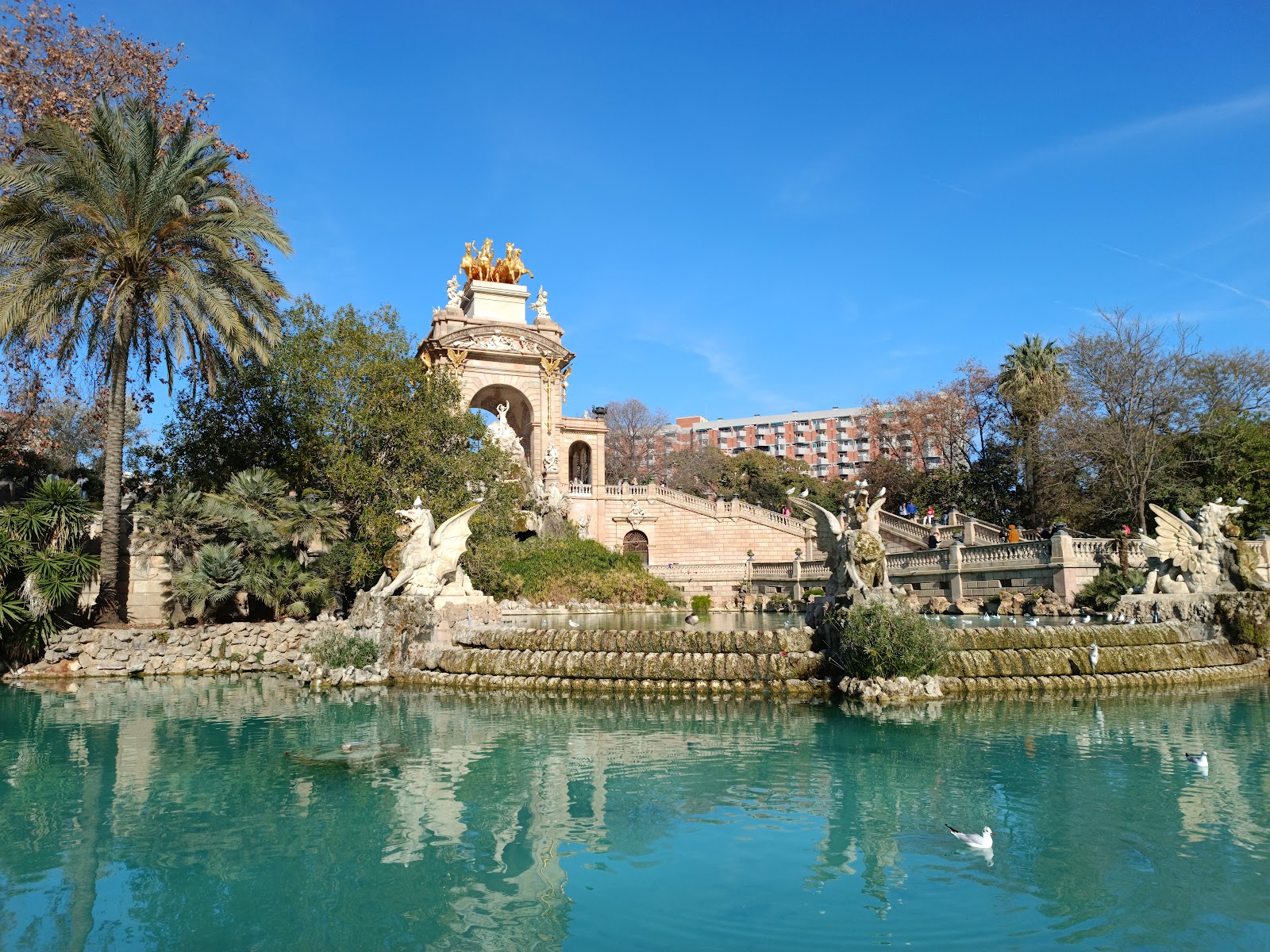
Parc de la Ciutadella (Source: Google Maps)
Parc de la Ciutadella is a sprawling urban park that offers a serene escape from the bustling city. Originally built as a military citadel in the 18th century, the park was transformed into a public space after the citadel was demolished in 1869. It features a stunning fountain, the Cascada Monumental, designed by Josep Fontserè and later enhanced by a young Antoni Gaudí. The park is home to the Barcelona Zoo, the Catalan Parliament, and several museums, making it a cultural hub. Its lush gardens, picturesque pathways, and tranquil lake invite visitors to relax and enjoy nature while exploring the rich history surrounding this beloved green space.
El Born Centre de Cultura i Memòria
Delve into history at the El Born Centre de Cultura i Memòria, a cultural center built over the ruins of a 17th-century market, offering insights into Barcelona's past.
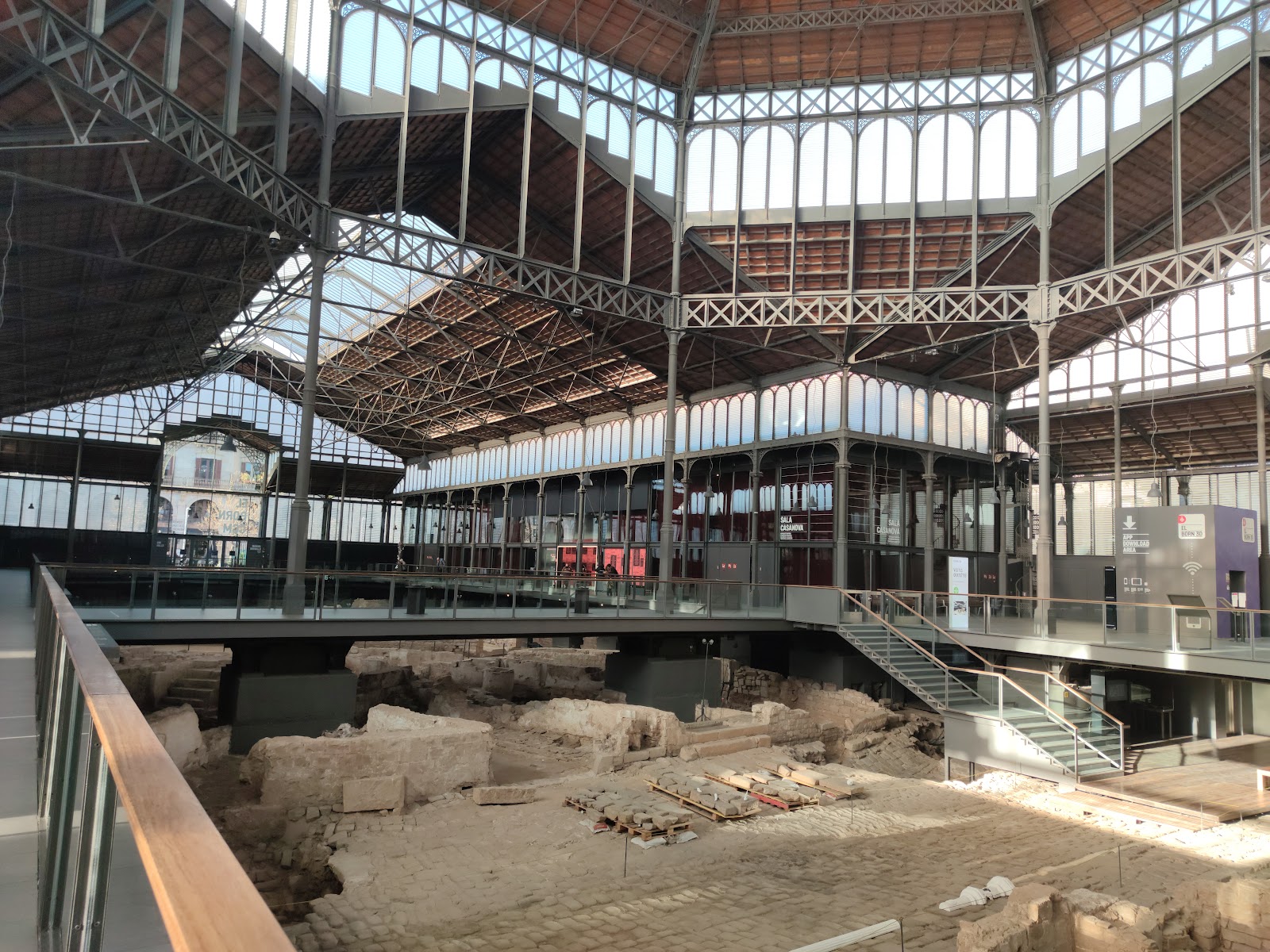
El Born Centre de Cultura i Memòria (Source: Google Maps)
El Born Centre de Cultura i Memòria is a cultural center that stands on the ruins of a 17th-century market, offering a unique glimpse into Barcelona's past. The center showcases archaeological remains from the War of the Spanish Succession, including a medieval street and various artifacts. Its modern architecture contrasts with the historic elements, creating a dynamic space for exhibitions and cultural activities. Visitors can explore the history of the neighborhood and its significance in the city’s social and cultural evolution, making it a vital stop for those interested in understanding Barcelona’s rich heritage.
Santa Maria del Mar
Visit the magnificent Santa Maria del Mar, a beautiful example of Catalan Gothic architecture, often called the "Cathedral of the Sea."
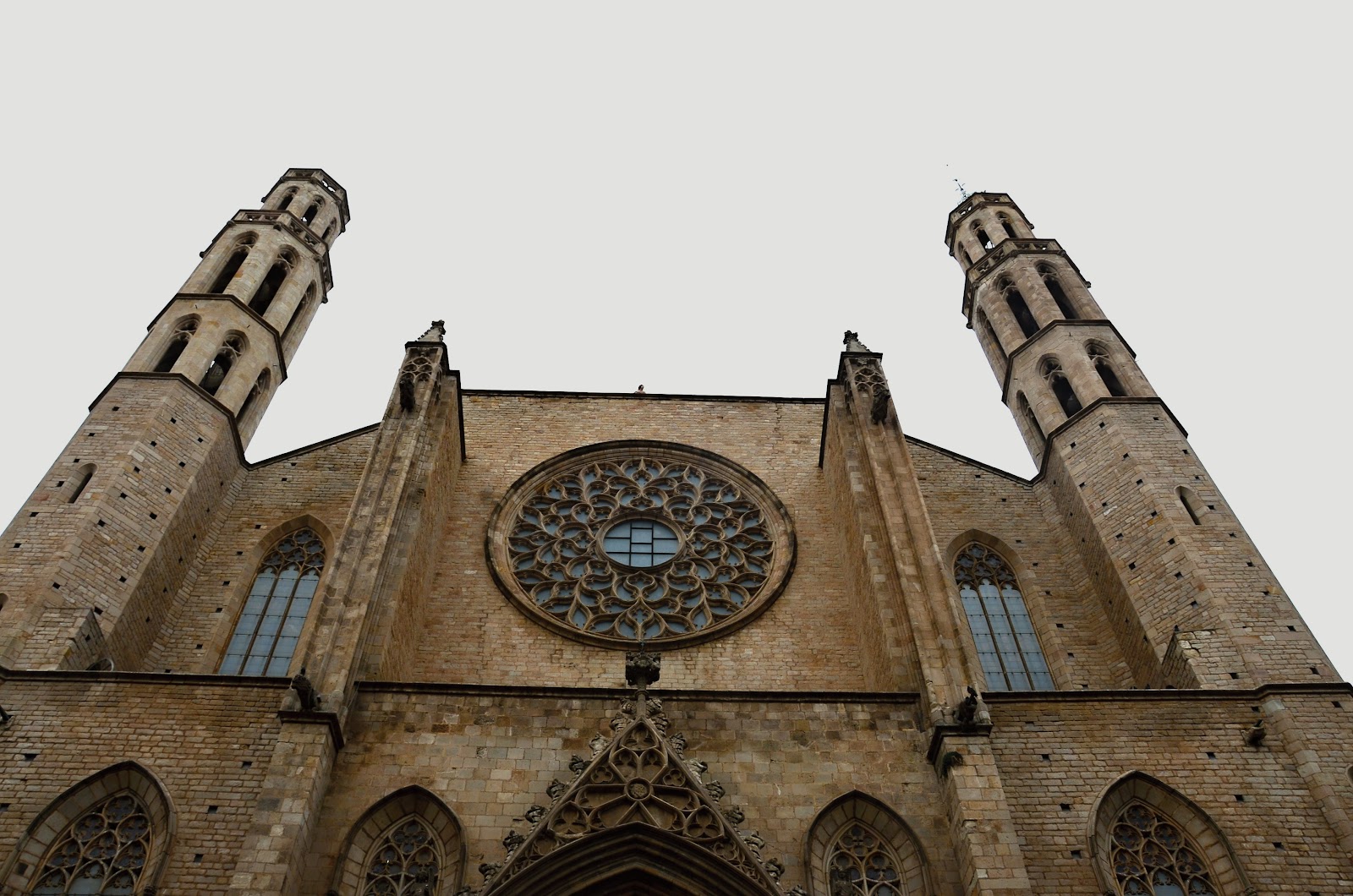
Santa Maria del Mar (Source: Google Maps)
Santa Maria del Mar is a stunning example of Catalan Gothic architecture, often referred to as the "Cathedral of the Sea" due to its proximity to the waterfront. Built in the 14th century by local artisans and fishermen, this basilica is renowned for its harmonious proportions and soaring columns. The interior features beautiful stained glass windows that create a serene atmosphere, while the exterior showcases a majestic façade with intricate stone carvings. This church has been a witness to the city’s history, serving as a place of worship and community gathering, making it a cherished landmark in Barcelona's vibrant cultural landscape.
Museu Picasso
Discover the artistic genius of Pablo Picasso at the Museu Picasso, which features an extensive collection of his works, particularly from his formative years.
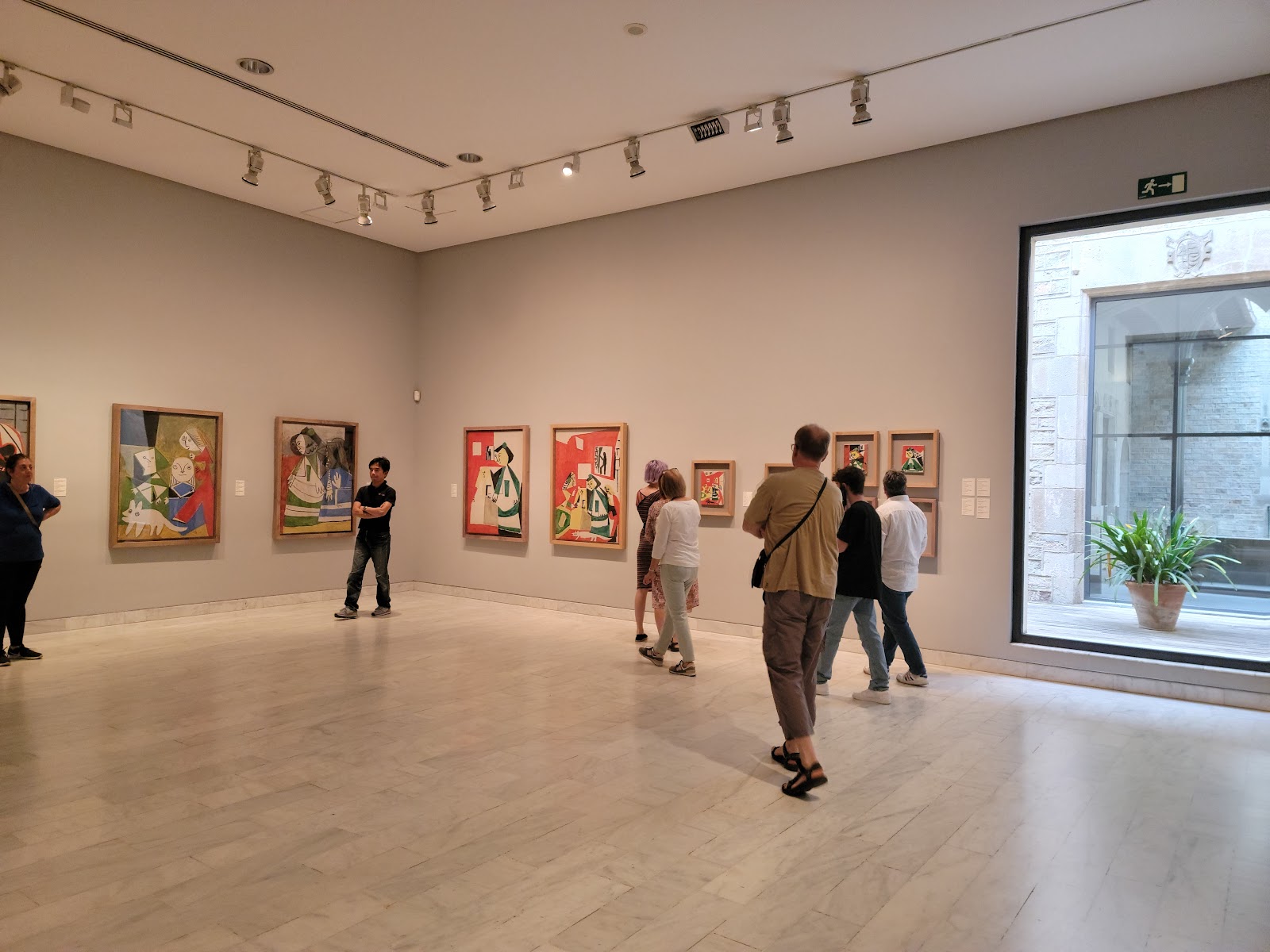
Museu Picasso (Source: Google Maps)
The Museu Picasso is dedicated to the works of Pablo Picasso, one of the most influential artists of the 20th century. Housed in five adjoining medieval palaces, the museum features an extensive collection of over 4,200 artworks, with a particular focus on his formative years in Barcelona. The museum provides insight into Picasso's artistic evolution, showcasing his early sketches, paintings, and ceramics. Visitors can explore the various styles and techniques he developed throughout his career, as well as his deep connection to the city. The museum not only honors Picasso's legacy but also highlights the cultural richness of Barcelona during his lifetime.
Barcelona Cathedral (Catedral de Barcelona)
Marvel at the grandeur of the Barcelona Cathedral, a stunning example of Gothic architecture with a rich history dating back to the 13th century.
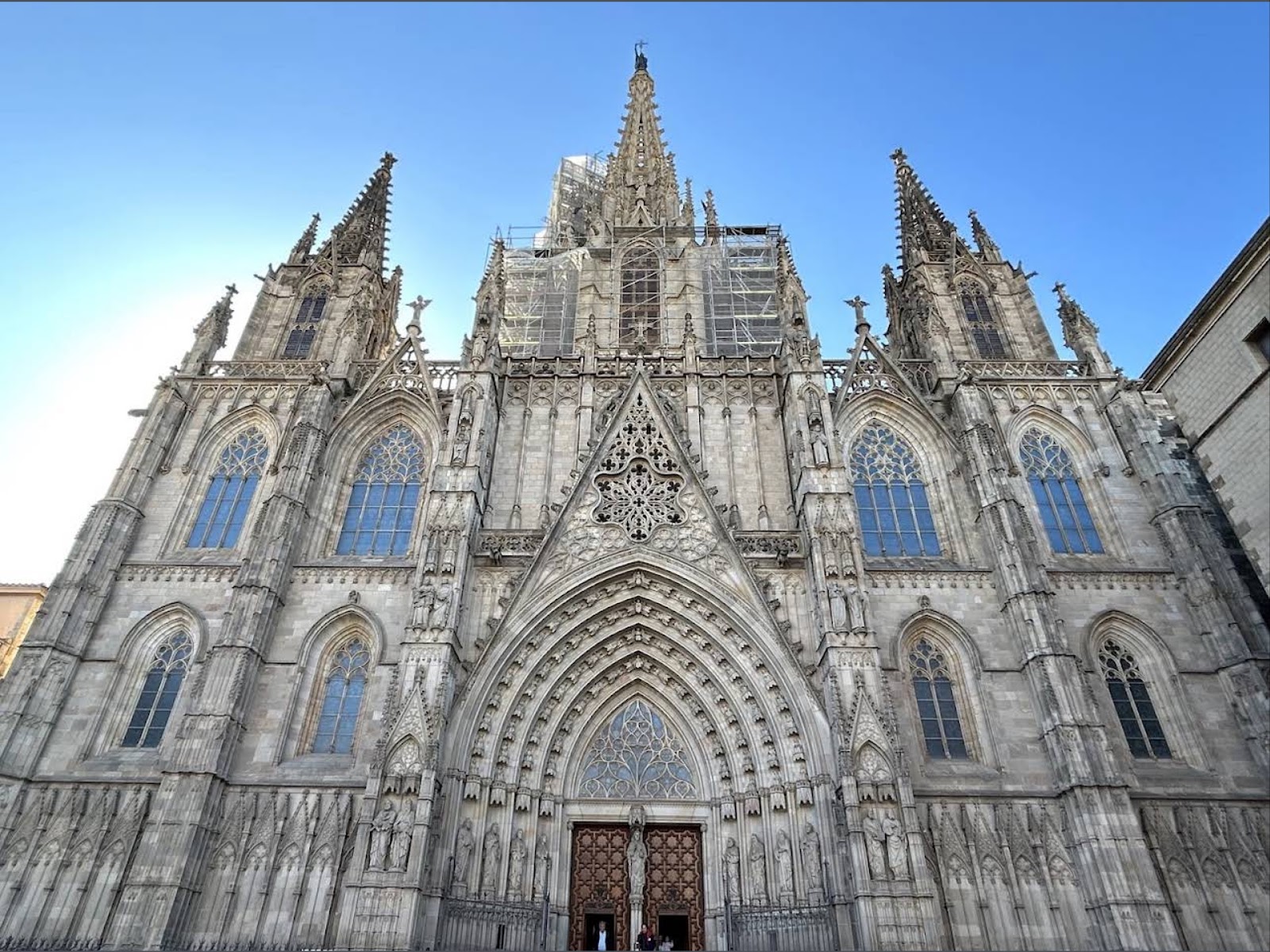
Barcelona Cathedral (Catedral de Barcelona) (Source: Google Maps)
The Barcelona Cathedral, known as the Catedral de Barcelona, is a magnificent example of Gothic architecture, with its construction beginning in the 13th century and completed in the 19th century. The cathedral is dedicated to Saint Eulalia, the co-patron saint of Barcelona, and features stunning spires that rise above the city skyline. Its richly decorated façade includes intricate sculptures and gargoyles, while the interior boasts beautiful chapels, a serene cloister, and a magnificent altar. The cathedral is not only a place of worship but also a significant historical site, reflecting the city's religious and cultural evolution over centuries.
Plaça Sant Jaume
Visit Plaça Sant Jaume, a significant political hub in Barcelona, home to both the City Hall and the Palace of the Generalitat of Catalonia.
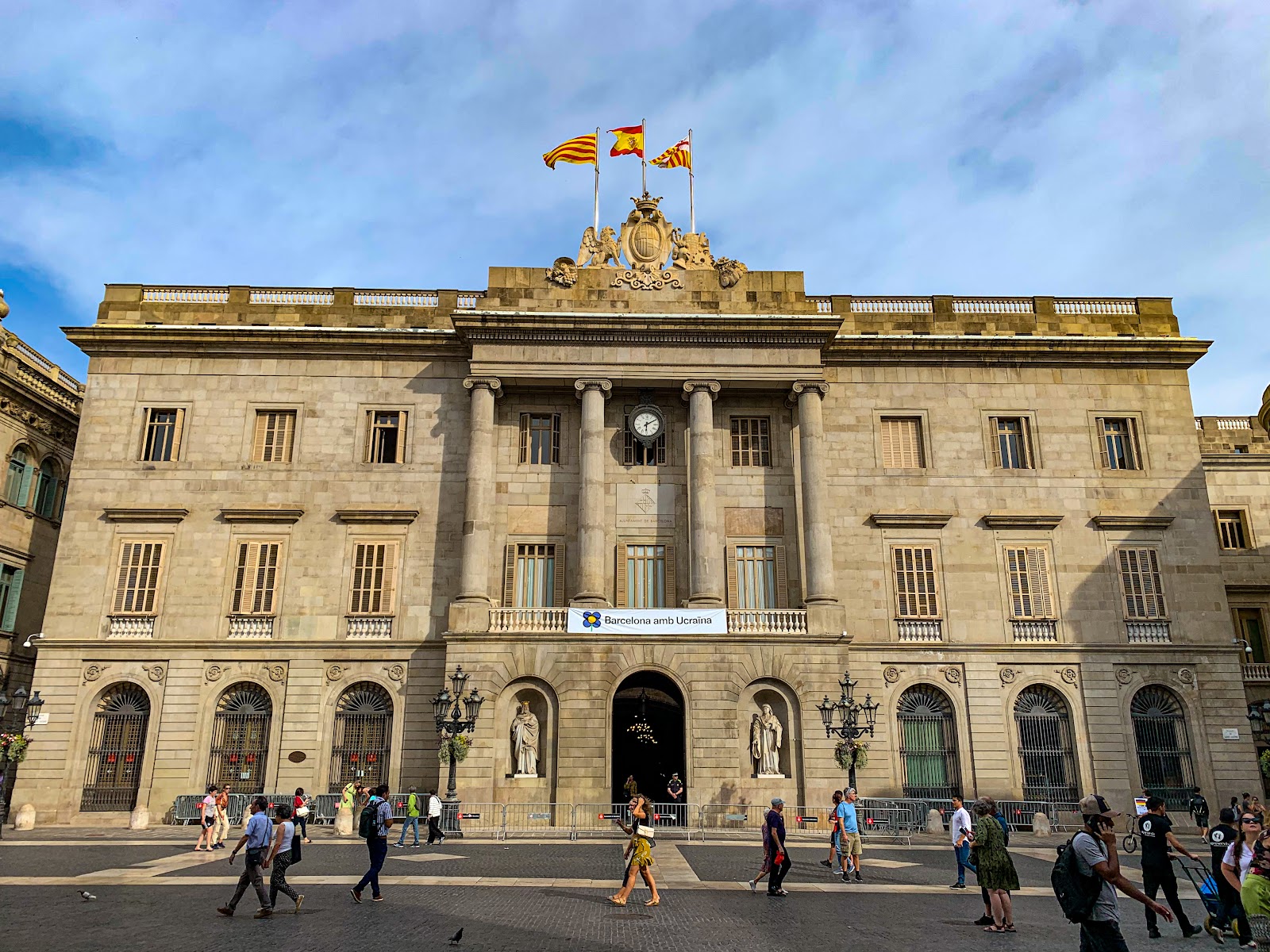
Plaça Sant Jaume (Source: Google Maps)
Plaça Sant Jaume is a historically significant square in Barcelona, serving as the political heart of the city. It is home to both the City Hall and the Palace of the Generalitat of Catalonia, representing the administrative power of the city and the autonomous Catalan government. The square has been a gathering place for locals since Roman times, evolving into a site for public events, demonstrations, and celebrations. Surrounded by impressive neoclassical buildings, Plaça Sant Jaume is a focal point for exploring Barcelona's political history and offers a glimpse into the city's vibrant civic life.
Gothic Quarter (Barri Gòtic)
Wander through the narrow, winding streets of the Gothic Quarter, the oldest part of the city, filled with charming squares, medieval buildings, and historical landmarks.
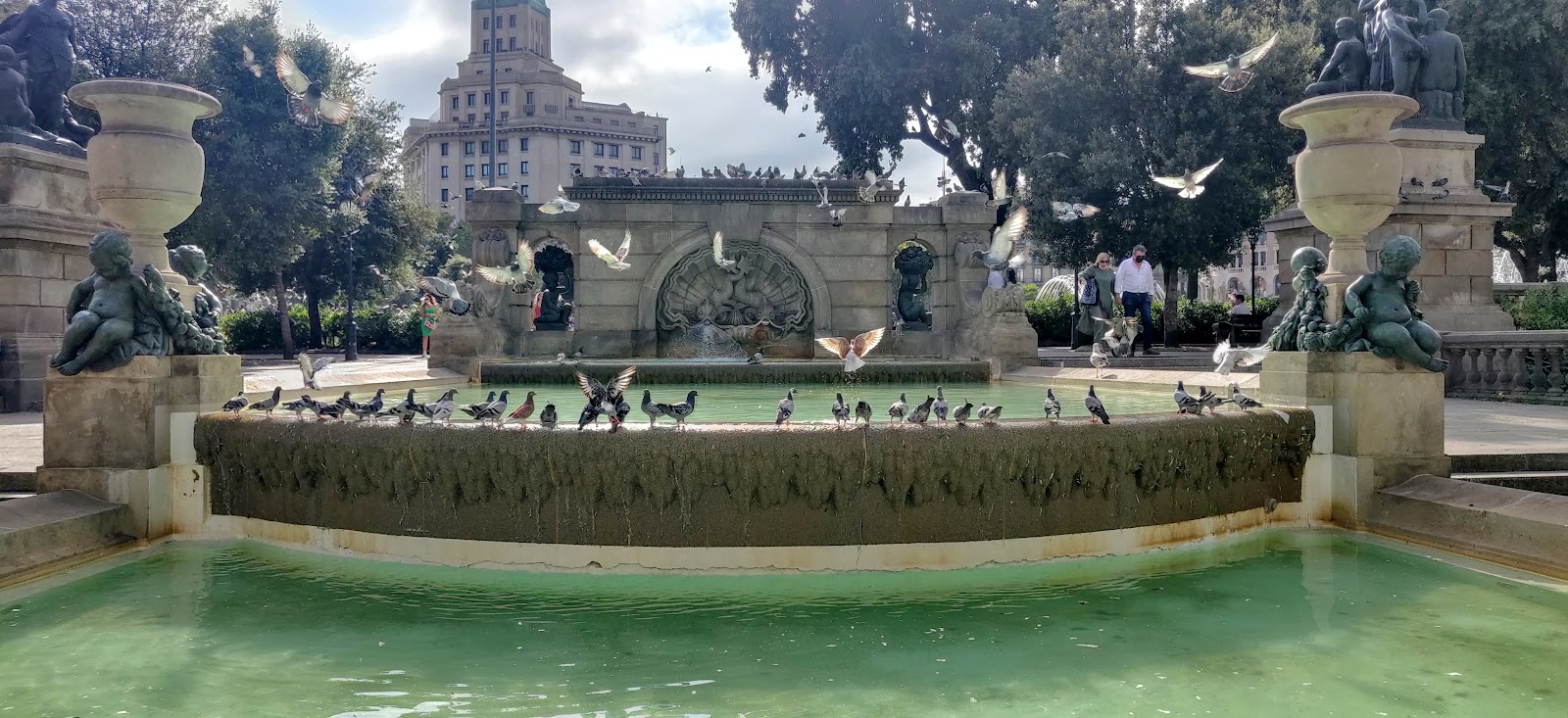
Gothic Quarter (Barri Gòtic) (Source: Google Maps)
The Gothic Quarter, or Barri Gòtic, is the oldest part of Barcelona, characterized by its narrow, winding streets and medieval architecture. This historic neighborhood is a treasure trove of cultural landmarks, including ancient Roman ruins, Gothic churches, and charming squares. The area showcases the city’s rich history, dating back to Roman times, with structures like the Barcelona Cathedral and the Plaça del Rei. As you wander through its labyrinthine alleys, you'll discover hidden gems, artisanal shops, and lively cafes, making it a vibrant hub of activity. The Gothic Quarter embodies the essence of Barcelona’s past, blending history with contemporary life.
La Boqueria Market
Conclude your tour at La Boqueria Market, a vibrant and bustling market where you can savor local Catalan delicacies and fresh produce.
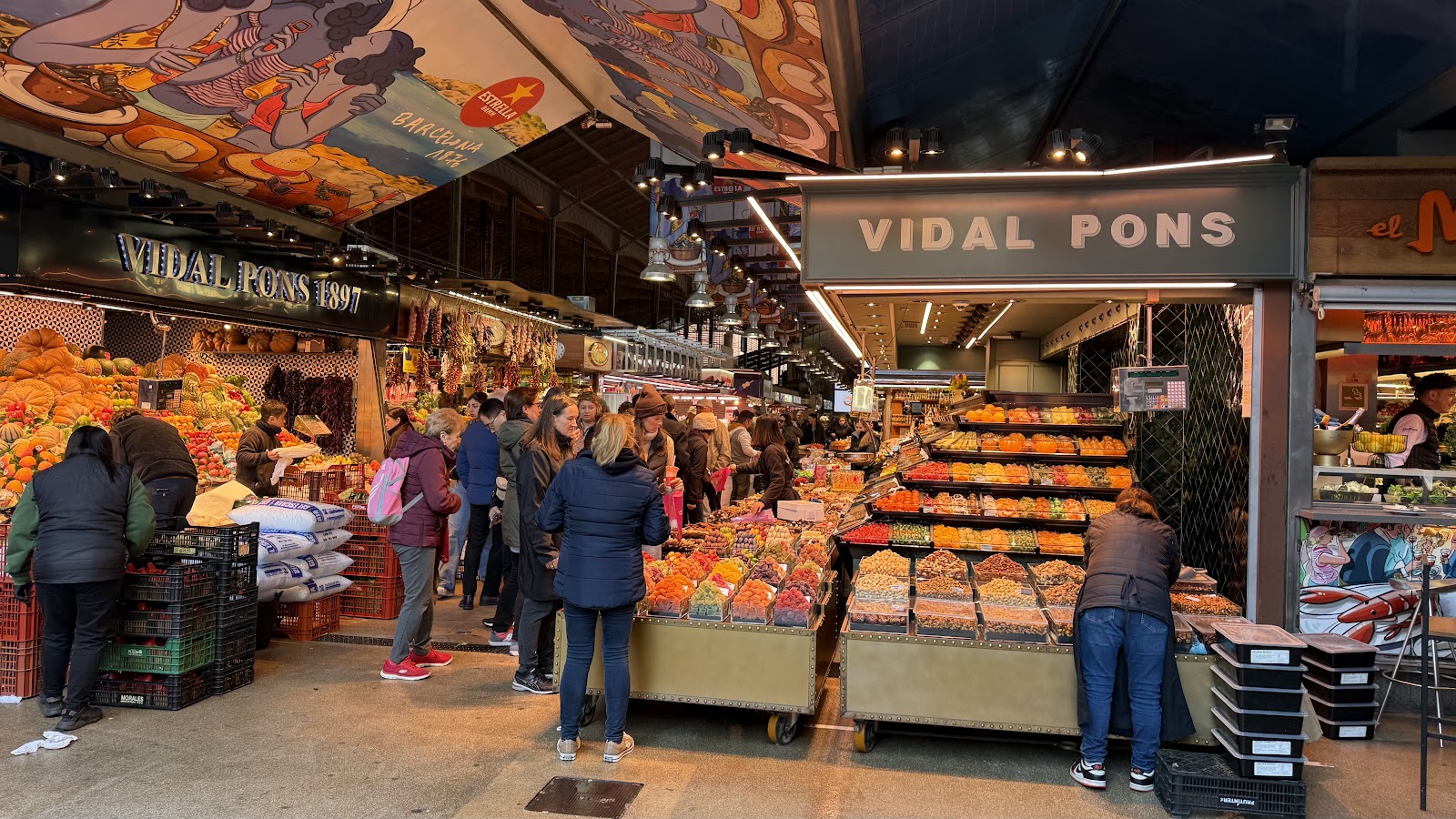
La Boqueria Market (Source: Google Maps)
La Boqueria Market, officially known as Mercat de Sant Josep de la Boqueria, is one of Barcelona's most famous markets, offering a sensory feast of colors, sounds, and flavors. Established in the 13th century, it has evolved from a simple meat market to a bustling hub of local produce, meats, seafood, and gourmet products. The market features a vibrant atmosphere with stalls brimming with fresh fruits, vegetables, and delicious tapas. Visitors can immerse themselves in the culinary culture of Catalonia, sampling local delicacies and interacting with friendly vendors. La Boqueria is not just a market; it’s a cultural landmark that reflects the city's culinary heritage and lively spirit.

Your travels, your rules.
Create your own Free Walking Tours.
Set your preferences, distances and anything you want to do or see.
Completely free, no payment required.